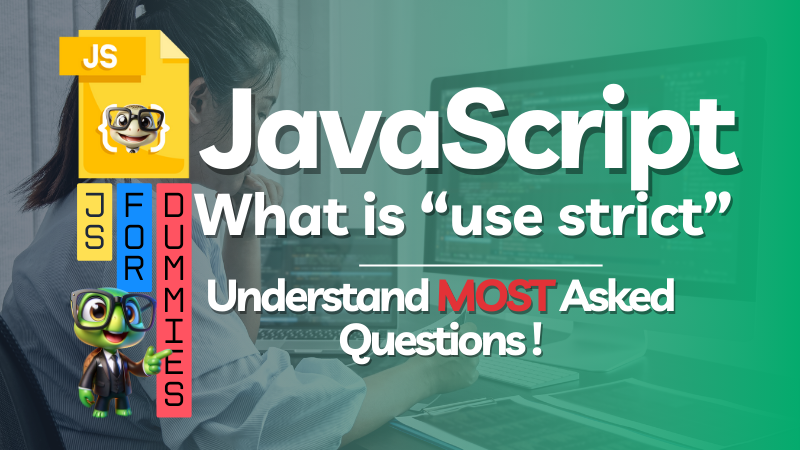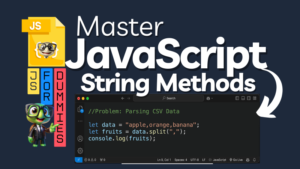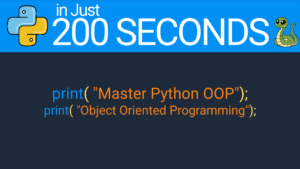
Meta Description: Master JavaScript’s “use strict” directive! Our ultimate guide explains why and how to use strict mode to eliminate silent errors, improve performance, and write secure, professional code. Includes real-world examples and best practices.
Introduction
Hey there, fellow coder! Let’s have a chat about one of the most simple-looking yet profoundly important concepts in JavaScript: the "use strict" directive. If you’ve ever seen this mysterious string at the top of a JavaScript file and wondered if it was just a comment or some kind of ancient spell, you’re not alone.
Many developers, especially those just starting, gloss over it. But here’s the secret: understanding and using "use strict" is one of the easiest ways to level up from writing code that just works to writing code that is robust, secure, and professional.
In this deep dive, we’re not just going to tell you what it is. We’re going to journey back in time to understand why it was created, explore the specific problems it solves with real-world analogies, and equip you with the knowledge to use it like a senior developer. So, buckle up! We’re about to make your JavaScript code significantly less error-prone.
What is “use strict” in JavaScript? More Than Just a String
At first glance, "use strict" looks like a string that someone forgot to assign to a variable. But in reality, it’s a pragma—a directive that tells the JavaScript engine to switch into a stricter mode of parsing and executing your code.
Introduced in ECMAScript 5 (ES5) in 2009, "use strict" was a response to the early design flaws and quirks in JavaScript. The language was created in a hurry, and some features, while flexible, were prone to causing subtle, hard-to-debug errors. Strict mode was designed to opt-in to a restricted variant of JavaScript, effectively turning silent failures into loud, throw-an-error failures.
Think of it like this:
- Non-strict (Sloppy) Mode: A lenient teacher who lets you get away with minor mistakes in your homework, which later lead to you failing the exam.
- Strict Mode: A strict but fair teacher who circles every single error in red pen right away, forcing you to learn the correct rules and ultimately ace the exam.
By using "use strict", you’re telling the JavaScript engine, “Hey, I want to write better code. Please call me out on my mistakes immediately.”
How to Enable “use strict” in JavaScript: Global vs. Local
Enabling strict mode is incredibly simple, but where you place the directive matters significantly. It can be applied to an entire script file or scoped to a single function.
Global Scope: The Whole New World
To apply strict mode to your entire JavaScript file, you simply put "use strict"; at the very top of the file, before any other statements.
// File: app.js
"use strict";
// All code in this file will now run in strict mode.
const userName = "Alice";
x = 10; // This will throw a ReferenceError
function myFunction() {
// Also runs in strict mode
}Crucial Point: If you have any code (even a comment) before the "use strict" directive, it will not work globally, and the engine will silently ignore it.
// File: app.js
console.log("This script is not strict... yet.");
"use strict"; // TOO LATE! This directive is ignored because it's not the first statement.
x = 10; // This will silently create a global variable 'x' (in non-strict mode) - DANGER!Function Scope: A Contained Environment
If you’re working with legacy code or a third-party library that isn’t strict, you can enable strict mode for individual functions. This is done by placing "use strict" at the beginning of the function body.
function strictFunction() {
"use strict";
// Strict mode is active only within this function's scope.
let y = 20;
undeclaredVar = 100; // ReferenceError
}
function nonStrictFunction() {
// This function runs in the default, "sloppy" mode.
undeclaredVar = 100; // This will create a global variable (bad practice!).
}Important Note: The Modern Default (Modules)
If you are using ES6 modules (using import and export), you get strict mode for free! Strict mode is enabled by default in modules and JavaScript classes. This is a strong reason to adopt modern module syntax in your projects.
// This is a module (e.g., because it has an import/export)
import { helper } from './helper.js';
// Strict mode is automatically on. No need to write "use strict";
x = 10; // This will throw a ReferenceErrorWhy Use “use strict” in JavaScript? The Compelling Reasons
You might be thinking, “My code works fine without it. Why bother?” Let’s break down the tangible benefits that make it non-negotiable for professional development.
- Eliminates Silent Errors by Throwing Explicit Exceptions: This is the biggest reason. Strict mode changes what are often silent, confusing failures into immediate, loud errors. This saves hours of debugging by catching mistakes as you type them.
- Prevents Accidental Global Variable Creation: In sloppy mode, if you forget to declare a variable with
var,let, orconst, JavaScript happily creates a global variable for you. This is a notorious source of bugs, as it can pollute the global namespace and lead to conflicts. - Enhances Security: It disables potentially “dangerous” or poorly thought-out features like the
withstatement and makesevalbehave more safely, preventing certain types of code injection attacks. - Paves the Way for Better Performance: Because strict mode prevents certain syntax and patterns, JavaScript engines can perform more optimizations. The engine can be more confident about what the code is doing, leading to faster execution.
- Paves the Road for Future JavaScript Versions: It reserves certain keywords (like
interface,package,private) that may be used in future versions of ECMAScript, ensuring your code remains compatible.
Examples of “use strict” in Action: From Theory to Practice
Let’s move beyond theory and see strict mode in action with detailed, real-world scenarios.
Example 1: Preventing the Use of Undeclared Variables
This is the most common “aha!” moment for developers new to strict mode.
The Problem (Sloppy Mode):
// app.js (without strict mode)
function calculateTotal() {
// Oops! We meant 'price', but we typed 'prize'. A typo creates a global variable!
prize = 50;
tax = 5;
return prize + tax;
}
calculateTotal();
console.log(prize); // 50 - We've now polluted the global scope!
console.log(window.prize); // 50 - It's a property of the global window object!This kind of bug is insidious. Your function might work, but later, another part of your code might accidentally rely on or change this global prize variable, leading to unpredictable behavior that is incredibly hard to trace.
The Solution (Strict Mode):
"use strict";
function calculateTotal() {
prize = 50; // ReferenceError: prize is not defined
// The error is thrown immediately, pointing you right to the typo.
let price = 50;
let tax = 5;
return price + tax;
}Strict mode acts as a vigilant spell-checker for your variables, saving you from countless debugging nightmares.
Example 2: Disallowing Duplicate Parameter Names
This error is less common but can cause logical errors that are very confusing.
The Problem (Sloppy Mode):
function createUser(id, name, id) { // Duplicate parameter 'id'
return { id: id, name: name };
}
const user = createUser(101, "Alice", 202);
console.log(user); // { id: 202, name: "Alice" } - Wait, what happened to 101?In non-strict mode, the second id silently overwrites the first one. You lose the first argument, and your logic is broken without any warning.
The Solution (Strict Mode):
"use strict";
function createUser(id, name, id) { // SyntaxError: Duplicate parameter name not allowed
return { id: id, name: name };
}
// The code never runs. The error is caught at parse time, before the function is even executed.Strict mode catches this silly mistake at the source, forcing you to write clear, unambiguous function signatures.
Example 3: Securing the eval Function
While eval is generally discouraged, sometimes it’s used. Strict mode makes it safer.
The Problem (Sloppy Mode):
var x = 10;
eval("var x = 20; console.log('Inside eval:', x);"); // Output: Inside eval: 20
console.log('Outside eval:', x); // Output: Outside eval: 20 - The eval changed our variable!The code inside eval can access and modify variables in the surrounding scope, which is a significant security risk.
The Solution (Strict Mode):
"use strict";
let x = 10;
eval("var x = 20; console.log('Inside eval:', x);"); // Output: Inside eval: 20
console.log('Outside eval:', x); // Output: Outside eval: 10 - The original is safe!In strict mode, variables and functions declared inside eval are confined to the eval scope. They don’t leak out, making your code more predictable and secure.
Example 4: Immutable Global this
In non-strict mode, when a function is called simply as func(), the this keyword defaults to the global object (window in browsers). This can lead to accidentally modifying the global object.
The Problem (Sloppy Mode):
function accidentallyGlobal() {
this.myGlobalProperty = "oops!"; // 'this' is the global object here.
}
accidentallyGlobal();
console.log(window.myGlobalProperty); // "oops!" - We've polluted the global scope again.The Solution (Strict Mode):
"use strict";
function safeFunction() {
this.myProperty = "safe"; // 'this' is undefined here.
}
safeFunction(); // TypeError: Cannot set properties of undefined (setting 'myProperty')In strict mode, the this value in such functions is undefined. Any attempt to set a property on undefined will throw an error, preventing accidental global pollution.
Pitfalls and Limitations of “use strict” in JavaScript
While overwhelmingly positive, it’s good to be aware of a few caveats.
- Not Fully Backward Compatible: Code written for strict mode might use reserved keywords or throw errors that would have been silent in older, ES3-era browsers. However, in 2024, this is a negligible concern as ES5+ is universally supported.
- Concatenation Issues: If you concatenate multiple script files, a global
"use strict"in one file could enforce strict mode on another, non-strict file that comes after it, potentially causing it to break. This is a strong argument for using module bundlers like Webpack or Vite, which handle scope correctly. - Can Be a Hassle to Add to Legacy Code: Adding
"use strict"to a large, existing codebase can reveal a mountain of pre-existing errors. It’s often best to do it gradually, function by function.
Best Practices for Using “use strict”
- Use It Everywhere, Always: Make it a habit. For any new project or file, start with
"use strict";at the top. - Prefer Modules: Use ES6 modules whenever possible to get strict mode automatically without having to write the directive.
- Use a Linter: Tools like ESLint have rules (e.g.,
"strict") that can automatically warn you or enforce the use of strict mode. They can catch many of the same problems, but strict mode is a runtime guarantee. - Embrace
letandconst: Strict mode works hand-in-hand with modern variable declarations. Usingconstfor variables that shouldn’t change andletfor those that should provides an additional layer of safety and clarity. - Test Thoroughly: When introducing strict mode to an existing project, run your full test suite to catch any newly revealed errors.
FAQs
Q1: Is “use strict” a string or a statement?
It’s a directive pragma, written as a string literal. Older JavaScript engines that don’t understand it will simply see it as a string without any side effects and ignore it, which is why this syntax was chosen for backward compatibility.
Q2: Can I use “use strict” inside a block (like an if statement)?
No. "use strict" is only recognized at the beginning of a script or a function body. Placing it inside a block (e.g., if { }) is invalid and will be ignored.
Q3: Does strict mode change how delete works?
Yes. In sloppy mode, delete variableName fails silently. In strict mode, it throws a SyntaxError. You can only delete object properties.
Q4: I’m using a framework like React or Vue. Do I need to add “use strict”?
Most modern frameworks (React, Vue, Angular) use build processes that compile your code into bundles, often using ES6 modules. Since modules are strict by default, you typically don’t need to manually add "use strict" to your component files. The framework tooling handles it.
Q5: Can strict mode actually break my website?
If your existing code relies on sloppy mode behavior (like accidental globals or duplicate parameters), then enabling strict mode will cause it to throw errors and stop execution. In that sense, it can “break” it. But this is a good thing! It’s exposing hidden bugs that were already there, waiting to cause problems.
Conclusion: Stop Being Sloppy, Start Being Strict
Adopting "use strict" is one of the lowest-effort, highest-impact changes you can make to your JavaScript development workflow. It’s not a crutch for beginners; it’s a hallmark of a developer who cares about code quality, maintainability, and professionalism.
It transforms JavaScript from a forgiving but error-prone language into a stricter, more reliable tool. It catches your typos, prevents logical errors, and secures risky operations. By making your code fail fast and loud, it saves you from the agony of debugging subtle, silent failures.
So, the next time you create a new .js file, let your first statement be "use strict";. Your future self, debugging at 2 AM, will thank you for it.
Do you have any questions about “use strict” in JavaScript? Let us know in the comments below! Happy (and strict) coding! 😊






